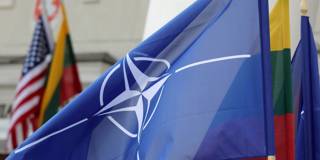Can Europeans shore up their collective defense and security by creating an independent, strongly coordinated defense industrial policy in time to adapt to a possible Donald Trump victory this November? There are three reasons to be skeptical, at least for the near term.
NEW YORK – The North Atlantic Treaty Organization, the most successful military alliance in history, is stronger than it’s ever been. Russia’s full-scale invasion of Ukraine in February 2022 underscored NATO’s continuing purpose and value, and the organization has since added two capable new members: Finland and Sweden. Yet while Russia is steadily losing soldiers, weapons, and its longer-term economic resilience, it is Ukraine, not NATO, that is absorbing Russia’s blows.
What about the future? European leaders know that Donald Trump has a solid chance of winning November’s US presidential election, and that a Trump restoration would cast doubt on the lasting commitment of NATO’s core contributor, along with the credibility of the security guarantees that make the alliance so powerful.
To be fair, the former president has raised some legitimate concerns. After Russia invaded Crimea in 2014, each member state pledged to spend at least 2% of national GDP on defense by 2024. Two months ago, NATO Secretary-General Jens Stoltenberg announced that for the first time since the alliance’s birth in 1949, European members will collectively meet that target. But that is only because some states, particularly those closest to Russia’s borders, spend more than their quota.

NEW YORK – The North Atlantic Treaty Organization, the most successful military alliance in history, is stronger than it’s ever been. Russia’s full-scale invasion of Ukraine in February 2022 underscored NATO’s continuing purpose and value, and the organization has since added two capable new members: Finland and Sweden. Yet while Russia is steadily losing soldiers, weapons, and its longer-term economic resilience, it is Ukraine, not NATO, that is absorbing Russia’s blows.
What about the future? European leaders know that Donald Trump has a solid chance of winning November’s US presidential election, and that a Trump restoration would cast doubt on the lasting commitment of NATO’s core contributor, along with the credibility of the security guarantees that make the alliance so powerful.
To be fair, the former president has raised some legitimate concerns. After Russia invaded Crimea in 2014, each member state pledged to spend at least 2% of national GDP on defense by 2024. Two months ago, NATO Secretary-General Jens Stoltenberg announced that for the first time since the alliance’s birth in 1949, European members will collectively meet that target. But that is only because some states, particularly those closest to Russia’s borders, spend more than their quota.